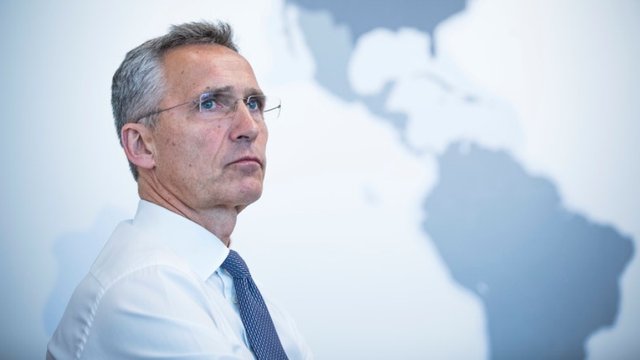NATO Secretary General Urges Reassessment of Military Support for Ukraine
In a compelling interview with The Economist, NATO Secretary General Jens Stoltenberg made a strong appeal to member nations, urging them to rethink the current limitations on military assistance to Ukraine. His call to action comes at a critical juncture, especially given the intensified fighting in regions such as Kharkiv. It’s a reminder of the urgent need for allies to adapt their strategies in response to evolving circumstances.
Why This Matters Now
Stoltenberg stressed that lifting certain restrictions on the use of supplied weaponry could significantly enhance Ukraine’s defensive capabilities. In his words, the existing limitations obstruct Ukraine’s ability to effectively target legitimate military objectives within Russia. This is not just a matter of policy; it’s about safeguarding lives and ensuring Ukraine can defend its sovereignty. For instance, consider a situation where a Ukrainian unit is forced to retreat simply because they lack the authorization to strike a distant enemy supply line; this could extend the conflict and lead to unnecessary losses.
NATO’s Position on Direct Involvement
Despite the push for greater military support, Stoltenberg reiterated that NATO has no plans to deploy ground forces in Ukraine. «Our goal is to support Ukraine and prevent the escalation of a full-scale conflict,» he explained. This highlights a crucial aspect of NATO’s strategy: providing support without crossing into direct combat. The balance is delicate, but it is one that NATO must navigate with care to avoid further escalation. Consider the NATO-led mission in Kosovo; although NATO provided air support, it was careful to avoid direct ground engagement, which ultimately contributed to a resolution without a broader war.
U.S. Support and International Dynamics
Echoing Stoltenberg’s sentiments, U.S. Secretary of State Antony Blinken confirmed that the United States is ready to grant Ukraine greater operational flexibility for attacks. National Security Advisor Jake Sullivan and President Biden also reinforced this cautious yet supportive stance. Their emphasis on prudence suggests an awareness of the potential consequences of military overreach, akin to the Cold War era, where miscalculations could lead to devastating confrontations.
Shifts in Military Assistance
A notable development comes from British Foreign Secretary David Cameron, who announced that Ukraine would be allowed to use British-made Storm Shadow cruise missiles against targets within Russian territory. This decision reflects a significant shift in the military support being offered to Ukraine, showcasing the allied commitment to enhancing Ukraine’s defense capabilities. It is a crucial step that signifies a more robust international support system as Ukraine navigates this challenging terrain.
The Bigger Picture
As NATO allies engage in discussions on how best to support Ukraine without direct involvement, the push to reassess military aid restrictions is a crucial turning point in the geopolitical landscape. It’s essential that these discussions are informed by analytical data and expert insights. For instance, studies indicate that countries offering decisive military support often see greater stability in conflict zones over time. According to the Stockholm International Peace Research Institute, countries that receive timely military assistance tend to reclaim territory more efficiently, leading to faster pathways to peace.
What’s Next?
The path forward requires thoughtful dialogue and a commitment to understanding the intricate dynamics of modern warfare. As NATO and its allies reassess their strategies, they must remain agile and responsive, balancing support with caution to navigate this complex geopolitical environment effectively. For individuals following this situation, whether policymakers or concerned citizens, staying informed and engaged is more important than ever. Your voice matters in shaping the narrative and influencing possible resolutions in this ongoing crisis.





